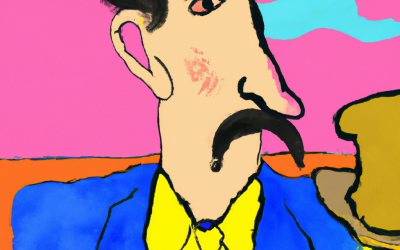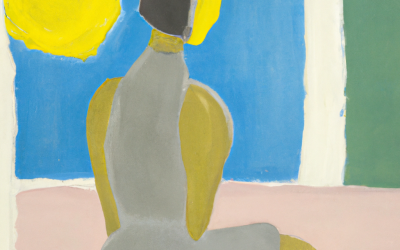TL;DR: How does critique affect art? Oh, let us count the ways. It’s weird, powerful, terrifying, transformative, sometimes annoying, often illuminating, and occasionally complete nonsense. But when handled well, it can turn your art into gold (or at least slightly shinier bronze).
1. First of All, Critique is Not a Personal Attack
Unless it is. In which case: run.
But usually, critique is not someone trying to crush your soul. It’s just someone with a different perspective, pointing out what they see. If you’re an artist, you’ve likely experienced that tiny inner voice that says “They hate it. They hate me. I’m quitting.” But take a breath. It’s just information. You get to decide what to do with it.
2. What Critique Can Do:
-
Help you see blind spots (like that extra arm your character mysteriously grew).
-
Push your work to the next level of refinement.
-
Train you to separate your ego from your expression.
-
Help you grow a backbone made of slightly sensitive titanium.
-
Occasionally spark an existential spiral, which may or may not result in better work.
3. What Critique Can’t Do:
-
Define your worth as a human or an artist.
-
Magically solve your artistic blocks.
-
Replace your gut instinct. (It might nudge it, though.)
-
Understand what your work really means to you.
Remember: someone might critique your work from their own lens—based on their tastes, biases, or what they ate for lunch. Doesn’t make it invalid. Doesn’t make it gospel either.
4. There Are Many Types of Critique: Choose Wisely
🔹 The Kind Critic
Offers feedback gently, usually starts with, “I really like this part, and maybe this area could be stronger?” A rare gem. Keep them around. Bake them cookies.
🔹 The Brutal Truth-Teller
No sugar. No fluff. Just raw, sometimes devastating honesty. Useful if you’re ready for it. Dangerous if you’re on a low self-esteem day.
🔹 The Confused Civilian
Looks at your abstract piece and says, “So… is this a potato?” Adorable. Not helpful.
🔹 The Professional Mentor
They’ve been there. They’ve had their work torn apart and reassembled. Their insights come with the wisdom of someone who has survived the war.
5. Famous Artists Who Survived (and Thrived On) Critique
-
Frida Kahlo turned her pain into power—and critics be damned.
-
Van Gogh was largely ignored in his lifetime and still kept painting like a mad genius.
-
Georgia O’Keeffe got endless critique about her subject matter, and she did it anyway.
Moral of the story? Critics come and go. Great artists keep creating.
6. How to Take Critique Like a Balanced, Evolved Human (or at least pretend to)
-
Listen fully before reacting. No interrupting, even when you want to scream.
-
Write it down. Let it simmer. Sometimes truth hides in uncomfortable places.
-
Ask questions. (“What do you mean by that?” is a solid go-to.)
-
Keep a journal of feedback. That way, you can spot patterns over time.
-
Cry if you need to. (Then maybe eat a snack and get back to it.)
7. How to Give Critique Without Ruining Friendships or Lives
-
Lead with what’s working. Always.
-
Be specific, not vague. (“This feels off” ≠ helpful. Try “This color draws attention away from the subject.”)
-
Don’t try to rewrite their work for them. Offer insight, not domination.
-
Know when to shut up. If the artist is clearly not ready, hold back.
8. Your Relationship to Critique Will Evolve
At first, critique might feel like a punch in the artistic gut. But eventually, it can become one of your most valuable tools. You’ll get better at filtering what’s useful, ignoring what isn’t, and staying true to your vision while still being open to growth. That’s the sweet spot.
So, really—how does critique affect art? It’s one of the best ways to break the spell of stagnation. (Even if you resist every step of the way.)
9. When to Ignore Critique Entirely
-
When it comes from someone who doesn’t understand your medium or context.
-
When it’s mean-spirited or clearly projecting unrelated issues.
-
When it asks you to become something you’re not.
-
When it messes with your joy. (Seriously, your joy matters.)
10. Final Thoughts (Before You Rage-Burn That Feedback Sheet)
Art is about communication, and critique is part of the conversation. You’re allowed to be vulnerable. You’re allowed to make bad art and learn from it. You’re allowed to improve, evolve, and stay weird. Use critique as a compass, not a cage.
And remember: How does critique affect art? It affects it deeply—but never more than the artist allows. Stay fierce. Stay open. And keep making stuff that makes people feel.
If you want a coach who actually understands the stormy weather of creative critique, come find me at House of Flow creativity coaching. Or check out The Infinite Artist, a loving guide to creativity, confidence, and chaos.






















